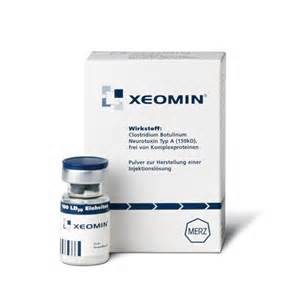Botox is the undisputed king of aesthetic neurotoxins since it was officially FDA approved in 2002. While newer neurotoxins from different manufacturers have since emerged (Dysport, Xeomin), they have not and likely never will topple the market share that Botox currently has. Most likely it will waver with modest changes back and forth very similar to what goes on the soda market battle of Coke vs. Pepsi.
But just because these other neurotoxins have a much smaller piece of aesthetic neurotoxin pie, does that mean they are inferior products? It is generally believed that all three neurotoxins are equivalent in terms of effectiveness and in how long they last. Botox is much better known, not only because they were the first neurotoxin FDA-approved and revolutionized the aesthetic facial industry, but because its manufacturer Allergan has done an outstanding job with its branding efforts.

Despite its equivalence to Botox, the use of Xeomin is going to be highly influenced by the practice behavior of the injector. Some practices use all three neurotoxins while others may only use one exclusively. Personal preference, brand familiarity, practice behavior and cost all lead to preferences of neurotoxin use. The cost issue is what aspect where Xeomin excels over Botox. It comes at a lower acquisition cost and these savings can be passed onto the patient.
Change is difficult and for this reason many patients may not be willing to leave Botox for a different neurotoxin. But because of clinical equivalency neurotoxin experimentation is possible with no downside.
Dr. Barry Eppley
Indianapolis, Indiana


